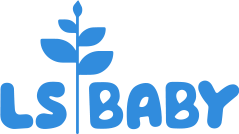Food allergies seem to be in the news more and more these days, and according to Allergy UK, 20% of all adults in the UK have one. It's an important thing to be aware of, particularly when you start to wean your little one. Here are a few myth busters and all the information you need to sort the fact from the fiction so you can reduce the risks for your baby.
What is a food allergy
Food allergies occur when our immune systems react negatively to proteins found in certain foods. It can cause some pretty unpleasant symptoms such as abdominal pain, vomiting, and diarrhoea. If your baby has a food allergy, it might also give them a runny nose or a cough. They might develop an itchy skin or rash, swollen lips and throat and possibly wheezing and shortness of breath.
You should be able to reduce your baby's risk of developing allergies by waiting until around six months before introducing your baby to solid food. Breastfeeding for the first six months can really help protect your baby. When you start introducing solid foods, you can include common food allergens in your baby’s diet. If you're unsure, ask your healthcare professional about food allergens and introducing your baby to solid foods.
Food allergy or food intolerance?
It can be very confusing working out whether it's a true allergy or just a food intolerance. True food allergy reactions typically happen pretty quickly after the particular foodstuff has been eaten and the reaction is a response of your baby’s immune system. Within hours or even minutes of eating, symptoms such as hives, pale skin, vomiting, diarrhoea and breathing problems can start. Reactions can happen even when a tiny amount of food is eaten. For some, even touching or inhaling the food can cause a reaction. The most common foods causing allergies in the UK are peanuts, tree nuts, cows’ milk, egg, wheat, soy, fish and shellfish.
Food intolerances tend to be reactions to foods inside the digestive system, and don’t involve the immune system. Lactose (the sugar in milk) intolerance is a common example of a food intolerance. Usually, small amounts of the problem food can be eaten before symptoms appear. They can be embarrassing as people often suffer from gas, stomach aches, bloating and diarrhoea.
The only sure way to know if your baby is experiencing a food allergy is to talk with your GP and discuss your concerns.
How babies develop food allergies
As mums and dads, you want to do everything you can to keep your baby safe, so knowing about food allergies is an important part of doing just that.
Also, because babies' digestive systems are still developing every day, food allergies are more common in infants than in other age groups. Some children may outgrow their food allergy, however the likelihood of this will depend on the type of food allergy as well as the severity of the allergy. If your baby does develop a food allergy, it is advisable to work with a healthcare professional who specialises in childhood allergies, as they will be able to help you manage the food allergy as well as monitor it over time.
How it works
A food allergy will develop when a baby's immune system becomes "sensitised" to an allergen or protein in a particular food. It can happen the first time a baby eats the food, but it can also come later too.
Once sensitised, the baby's body will make antibodies—little proteins that "lock" onto foreign invaders—so they are ready to react to that food the next time it's eaten.
These antibodies then trigger immune cells to make histamine, a chemical that causes allergy symptoms—such as a rash, wheezing, diarrhoea, etc.
Feeding choices may help lower your baby’s chances of developing a food allergy. That is why experts recommend you only give your baby breastmilk for the first 6 months of life and waiting to around 6 months of age before starting with appropriate solid foods.
Atopic dermatitis
Atopic dermatitis (AD) is the most common symptom of a food allergy. It is a type of skin rash or eczema that might appear on your baby's face, scalp, limbs and knees. The number of infants with AD has increased over the past 30 years, and nearly 1 in 5 infants will develop AD by the time they are six months old. While any baby can develop AD, if you or their siblings have ever had symptoms of allergies such as hay fever, asthma or AD, or if you or their siblings have diagnosed food allergies, then they may be more likely to get it themselves.
Cow's milk protein allergy
Cow's milk protein allergy affects around 1 in 40 children in the UK. As always, if you think your baby may have a food allergy or you have any concerns or worries, talk to your doctor as soon as possible to see if allergy testing might be a good idea.
Introducing common food allergies into your baby’s diet
Introducing common food allergens around six months is recommended. Foods that children are most commonly allergic to are milk, wheat, egg*, soy, peanut**, tree nuts, fish and shellfish. Exposing your little one to these foods early on can help reduce the chances of them becoming allergic. Reactions to foods can be common in babies, so knowing what to do and how to spot the signs is important.
Here's some more info to help.
When to check with the doctor
If any of the following circumstances apply, it is especially important to have a chat with your Healthcare professional before introducing a common food allergen into your baby's diet.
-
Your baby has severe atopic dermatitis, an allergic skin rash, and it keeps coming back or is poorly controlled.
-
Your baby has reacted to other foods.
-
A sibling has a peanut allergy.
-
Your baby has a diagnosed food allergy.
-
You have a history of food allergies in your family.
Introducing foods with common allergens
Once your baby is six months old, don't avoid feeding them the common allergens (in an age-appropriate form). In fact, experts say you should include them in their diet before they turn one.
Introducing peanuts in an age appropriate form as part of their complementary feeding from six months onwards can prevent peanut allergies***. Just make sure you feed them in the right way based on your baby's age and development.
Here are a few more handy tips below
Tips on how to introduce common food allergies
-
Wait until your baby is already used to and accepts eating solid and other foods, such as infant cereal and baby food purees.
-
Try foods most likely to cause a reaction at home for the first few times you offer it, rather than at day care or when you're out and about. Watch your baby carefully each time you feed a common food allergen until tolerance is established.
-
Pick a time when your baby is feeling well, and you can devote your full attention for at least two hours so that you can watch for an allergic reaction.
-
Offer your baby a small amount of the new food, to begin with.
-
If your baby doesn't react, slowly increase the amount you offer them.
-
Offer one new food at a time. Wait about three days after feeding the new food before you introduce another. It will make it easier to pinpoint which food is causing the allergy if your little one reacts.
-
Follow advice from your doctor or healthcare professional about introducing new foods.
Allergy Symptoms
Signs of food allergy can show up minutes or hours after your baby's first bite, or your little one may not react until they have had the food a few times. That's why it's best to serve food allergens at home so you can keep an eye on them. If you see a reaction which gives you cause for concern, stop feeding them and call your doctor if you suspect an allergy.
Signs of a baby allergic reaction:
-
Their cry changes to become shrill or hoarse sounding
-
Persistent or excessive crying that only happens after eating certain foods
-
Vomiting
-
Diarrhoea
-
Runny nose, congestion, cough or sneezing
-
Skin irritations such as rashes and hives
-
For more severe reactions, such as difficulty breathing - dial 999.
We hope this information has been helpful. The chances are your baby will not have an allergy or react to the well-known allergens, but it's always good to be informed and ready.
And finally, enjoy weaning; it's a real milestone in your little one's life!
*Never feed raw or undercooked eggs to baby
**Whole Peanuts and tree nuts are a choking risk and should never be introduced to young children in their whole form. Peanut and nut butters are also a choking risk unless mixed with water to a very thin consistency. Until you have the okay from your baby's doctor due to the risk of aspiration; however, developmentally appropriate peanut-containing products may be introduced earlier.
*** The European Academy of Allergy and Clinical Immunology (EAACI) suggests introducing peanuts into the infant diet in an age-appropriate form as part of complementary feeding (most effective age from 6 mos) in order to prevent peanut allergy in infants and young children (moderate-certainty evidence).











